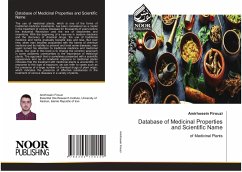
Scientific Review of the Application of Positron Emission Tomography
(PET)
Versandkostenfrei!
Versandfertig in 6-10 Tagen
43,99 €
inkl. MwSt.

PAYBACK Punkte
22 °P sammeln!
The existence of antimatter was first proposed by Paul Dirac in 1928. By combining quantum mechanics and special relativity, Dirac formulated a separate relativistic wave equation for fermions (fundamental particles that obey Pauli's law), which led to surprising results: Solving this equation, not only the negatively charged electron (now known), but explains the positive charge electron. This led Dirac to predict the existence of "Antimatter" and led to the claim that for every particle of matter, there is an antimatter particle of equal mass but opposite charge. Four years later, the existe...
The existence of antimatter was first proposed by Paul Dirac in 1928. By combining quantum mechanics and special relativity, Dirac formulated a separate relativistic wave equation for fermions (fundamental particles that obey Pauli's law), which led to surprising results: Solving this equation, not only the negatively charged electron (now known), but explains the positive charge electron. This led Dirac to predict the existence of "Antimatter" and led to the claim that for every particle of matter, there is an antimatter particle of equal mass but opposite charge. Four years later, the existence of antimatter was proved by Carl Anderson1, a postdoctoral student at the California Institute of Technology [1]. Using a cloud chamber, Anderson identified and observed some unusual paths of cosmic rays. These paths had the same characteristics so that these paths left traces that were bent in the opposite direction of the electrons. This matter referred to an electron particle or positive charge.












